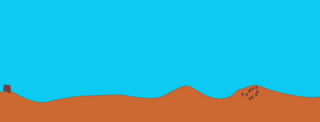The AGU Fall Meeting is the biggest Geoscience conference in the world and is organized by the American Geophysical Union. This Conference always takes place in December and hosts about 25 thousand attendees each year. This year the conference took place online.
After about eight months of literature research and the beginning of my own research, I was excited to get to know the faces behind the names. Thanks to the GSGS travel grant, I was able to do so and take part in my first conference as a PhD student.
In addition to the overwhelming range of scientific talks and posters at the AGU20, the conference also offered a wide range of workshops and discussions. In order not to crush you with a specific scientific topic, I would like to address a workshop and discussion that probably affects us all.
Often we are so focused in our research that we have the feeling that only insiders understand what we are doing. But in times where „alternative“ facts get more and more attention, we, the scientists, have to show the real facts and build trust in what we do. Therefore, we need to reach out and explain our research to a broader audience. We all have to do science communication!
One way to do this was explained in a hands on workshop on „How to sketch your science“. With a sketch of your research you can break down the research field into the basic components. You can address a broader audience and make your research more accessible. Since I am evaluating dust aerosols in climate models, I tried to sketch one way how dust is emitted into the atmosphere to show you an example:
We all know mineral dust, i.e. sand, from deserts or from the playground next door. And sometimes we hear about Sahara dust being transported through the atmosphere from North-Africa to Europe. But how does this dust get into the atmosphere?
One way that dust gets into the atmosphere is called saltation bombardment. Here, dust particles are „hopping“ over the surface due to strong winds (saltation). When the dust particle hits the ground, smaller particles are kicked out and liftet into the air (bombardment). After this, the wind can take over and lift the smaller particles further up. (click on the picture to see the animation)
If you are curious about „How to sketch your science“ visit the AGU blog entry about this topic: https://blogs.agu.org/sciencecommunication/2020/12/02/how-to-sketch-your-science/
